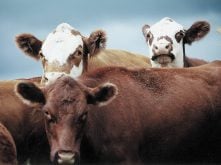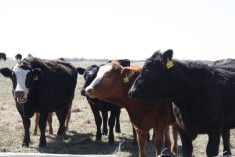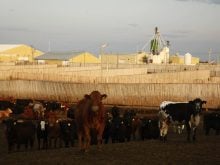This cattle market information is selected from the weekly report from Canfax, a division of the Canadian Cattle Association. More market information, analysis and statistics are available by becoming a Canfax subscriber by calling 403-275-5110 or at www.canfax.ca.
Fed market rebounds
The latest chapter in the U.S. tariff saga resulted in the fed market rebounding sharply during the week ending March 14.
Read Also

Manitoba extends Crown land rent freeze
Manitoba government links the continued rental rate freeze on grazing and forage leases to economic and environmental challenges facing the industry
With tariffs for goods covered under the Canada-U.S.-Mexico Agreement paused until April 2, fed cattle prices jumped by $5-$6 per hundredweight from the previous week.
Alberta fed steers averaged $270.76 per cwt., up $5.98 per cwt. from the week ending March 7, while fed heifers averaged $268.05 per cwt., up $5.03 per cwt.
This market rebound brings fed prices within $6-$8 per cwt. of the record-high prices seen in February.
Dressed sales were $5-$20 per cwt. stronger than the previous week, reported in the range of $450-455 per cwt. delivered. Interest from the three western Canadian packers resulted in moderate competition.
Cattle that traded were set to be delivered anywhere from the last week of March to the second half of April.
The Alberta cash-to-futures basis was reported at -$18.70. cwt. Not only is this the second-largest drop since the first week of 2025, but it is also $10 per cwt. lower than the five-year-average.
The nearby live cattle futures contract bounced back from $192.30 per cwt. on March 3 to $203.10 per cwt. on March 14. This is only $4.10 per cwt. shy of the high recorded in January.
Canadian fed cattle and cow exports to the United States totalled 17,595 head for the week ending March 1, 29 per cent larger than this time last year.
This is the largest weekly volume recorded in the last decade, and large export volumes are expected to continue as the threat of tariffs remain.
Year-to-date exports are 123,911 head, 29 per cent larger than in 2024.
In Ontario, dressed sales were reported at $450 per cwt. delivered, rising by $30 per cwt. from the previous week . Cattle that traded were scheduled for delivery in one to two weeks.
Cow market improves
The week ending March 14 began slow for the non-fed market, with just one major packer bidding. This improved speculative and feeder cow buying interest.
As the week wrapped up, however, all major packers returned to buying cows, raising prices by $3-$4 per cwt.
The week saw a significant decrease in non-fed volumes as many auction markets reported about 100 head of cows coming through their weekly sales.
While more culls are expected through calving season, Canfax predicts supplies will remain manageable.
Currently, Alberta cows are trading at a discount of $8.50 per cwt. against the U.S. market.
The butcher bull market saw major price jumps, with prices rising by $16 per cwt. to set new highs.
Regardless of stock market concerns and pressure on agriculture commodities, there is optimism as deferred live cattle contracts for October-December reached new highs the week ending March 14.
Calf and feeder prices were supported by the pause on U.S. tariffs, as well as by the strengthening futures market.
Forward delivery prices for yearlings off grass in August-September dropped by $10 per cwt., but this hasn’t affected demand for grass cattle.
Demand for open breeding-quality heifers on offer over the last few weeks has been mixed. Breeding heifers have been selling in the range of $2,850-3,750 per head, with $3,330 per head as the average price.
Canadian feeder exports to the United States for the week ending March 14 totalled 6,666 head, a significant 149 per cent more than this time last year.
From the start of 2025, 900 pound and heavier feeders have traded relatively flat, ranging from $350-360 per cwt.
Canfax reported that according to its trends data, short-keep steers placed in March tend to have the greatest likelihood of being profitable when compared to all other classes of cattle, from a feedlot margin perspective.
Cutouts rally
Cut-out values rallied the week ending March 14, with Choice rising 2.1 per cent from the previous week to close at $319.69 per cwt. Select was up 1.3 per cent to close the week at $307.47 per cwt.
Cut-out values are currently two to three per cent higher than at the same time last year. This is 24-25 per cent higher than the five-year average.
The Choice-to-Select spread was $12.22 per cwt., which is about $3 per cwt. wider than in 2024 and the five-year average.
As spring approaches, demand for middle meats is expected to increase as consumers turn to purchasing loins and ribs for the barbecue.















